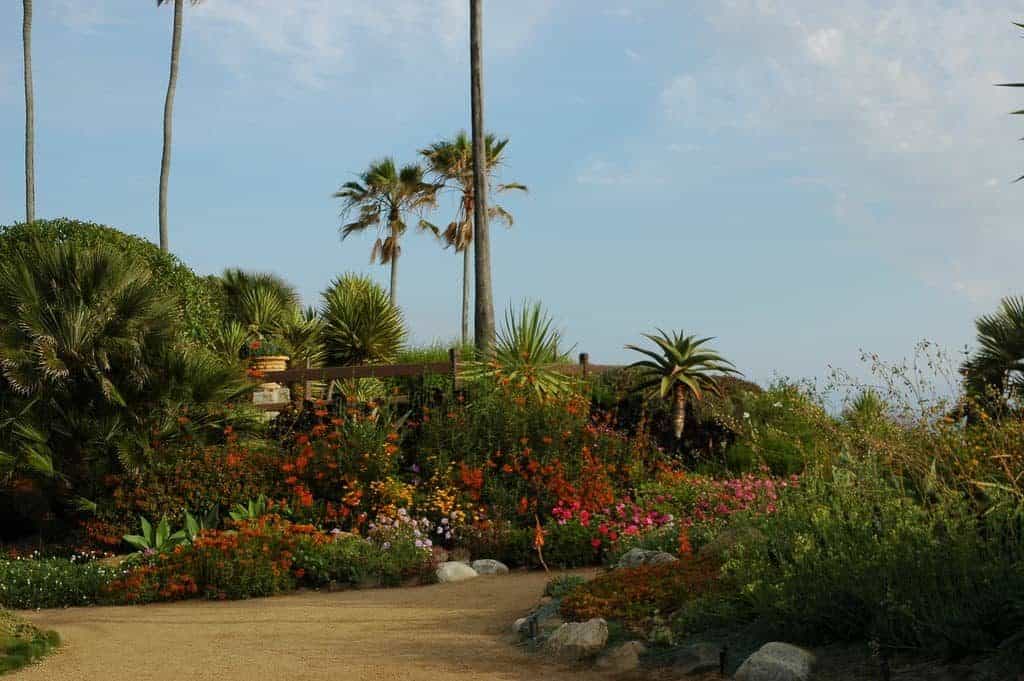
There are many principles that Water Wise Landscape‘s landscape designers follow when designing landscapes. The first of them is balance. And with balance, there are two types: symmetrical and asymmetrical. Symmetrical balance refers to having symmetry within the landscape. For example, you’ve got a path and the plans that you’re using on either side of the path are similar or the same. It adds symmetry within the landscape.
It helps form the landscape. The second is a symmetrical. And asymmetrical refers to not having a symmetrical balance, it refers to a little bit more haphazard, but not. But intentionally created to be slightly haphazard, not created to be messy or cluttered.
With assymetrical, there’s still plans on either side, but it’s not exactly the same plant in.
The second principle is vocalisation or interest. What this means is having some area within the landscape that becomes the focal point. Typically the main focal point is the front door. You could let’s say you have a long front door. You have areas on either side of the front door.
You could have pottery on both sides of the front door. That creates a focal point or let’s say you’re designing your backyard or you’ve got. Some area in your backyard that you look at through either the kitchen window or the living room window with a dining room window, you could create some sort of focal point where as you’re looking out that window, whichever room it is, you can see something out that window that draws your eye. And they can be more than one focal point, depending on how many windows you’ve got in or where you’re looking.
The third principle is simplicity. Oftentimes when we’re designing landscapes and going, let’s say to my plant material, it’s very easy to want to buy everything, have a little bit of everything. You have all kinds of colors within the landscape. The problem with that is you need to account for the mature height of whatever plant you’re proposing to put into your garden, and more importantly, it’s always easier within landscapes to keep it just a little bit simple, like using common hardscape materials. You don’t want to make it too cluttered or too overpowering. You don’t need 90 different varieties of plants. You can probably go with a good five 10 and repeat them in mass and create a beautiful, stunning landscape.
And the point of simplicity is to just not overdo it. In this case, with simplicity, there isn’t a lot of plants happening in this landscape, there’s a dry creek bed to the left of the image, but the plant selection is kept very minimal. The space is small and we didn’t want to cut it with a lot of plant varieties that would then create clutter.
The third principle of landscape design is repetition. What that means is repeating in mass. So when we do design and landscape, when I put plants on paper or even placing plants, it’s always best visually to place them and plant them in odd numbers. There’s just something about it that visually is more appealing to the eye. And it’s always nice to plant in mass. Let’s say you have a massive five Cleveland stages or five coyote ground covers when you have them in mass. It just looks much nicer. It visually looks more appealing. It just creates different textures, different heights. And it’s always best to repeat plants within the landscape.
The fifth principle of landscape design is proportion. This means that you’re planting with the assumption of understanding how tall and light the plant is going to get if, let’s say, you’re putting in a plant that gets five feet wide. You’re going to want to leave enough room for that plant to grow as wide as it’s going to get, and there needs to be a five foot diameter around the base of that plant that’s empty. So that allows for the plant to be able to properly grow or let’s say, for example, you’re putting in a twenty four inch box tree.
You’re not going to plant a tree in a two foot wide planter because first of all, the roots of that tree and the tree itself are way too big to grow in a two foot white planter. It’s about understanding proportion and scale and understanding. That each plant is going to need a sufficient amount of room to grow.
The sixth principle of landscape design is unity. And what that means is creating a garden and creating a design that unifies the landscape. It what it means is, for example, if you’re going to use a certain number of plants or certain not a certain number, but like a certain type of plant in your front yard, you might want to mimic and use that plant also in the backyard to create kind of a uniform between the two.
Maybe you’re using flagstone pathways in the front. You might want to unify that within the backyard by using flagstones somewhere in the backyard. And the seventh principle of landscape design is enclosure. This means that within the garden, if you have the room and if you have the space to create some sort of enclosed space, a little secret seating area that the parents go to with the glass of wine once the kids have gone to bed, just a little hidden gem area within the landscape that you can relax and maybe do a little yoga if there’s enough room.






